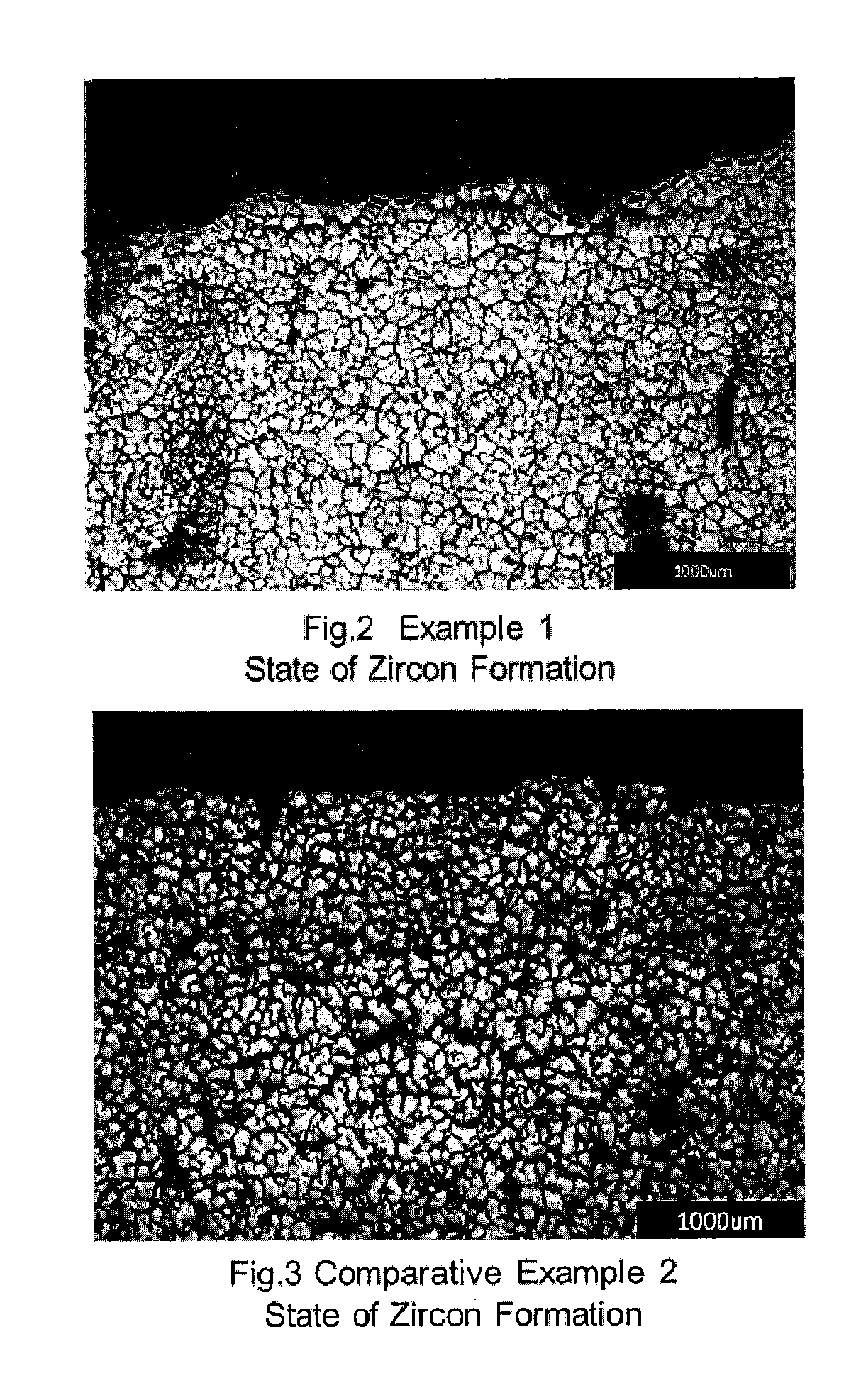High zirconia fused cast refractory
a high zirconia, fused cast technology, applied in the field of high zirconia fused cast refractory, can solve the problems of a large number of heat cycles, relative decrease of glass phase, and large number of fused cast refractory heat cycles, and achieve the effect of less cracks in production and heating, and less cracks in the formation of glass phas
- Summary
- Abstract
- Description
- Claims
- Application Information
AI Technical Summary
Benefits of technology
Problems solved by technology
Method used
Image
Examples
example 1
[0185]Example 1 and Comparative Example 2 have substantially the same composition except for SnO2 and BaO in
[0186]In FIGS. 2 and 3, the upper black portion is the liquid crystal glass, and the lower white portion is the structure of the refractory.
[0187]In Example 1, the thickness of zircon formed, which is above the broken line in FIG. 2, is approximately 0.1 mm. In Comparative Example 2, zircon is deposited over the entire structure shown in the figure, and the thickness of zircon formed including the lower portion outside the figure is 3.2 mm.
[0188]The Na mapping charts measured by EPMA (EPMA8705, available from Shimadzu Corporation) of another part of Example 1 and Comparative Example 2 in the same heat cycle test 3 are shown in FIGS. 4 and 5.
[0189]The left side of the figure is the BSE image, in which the average atomic number is expressed by the luminance, i.e., a large atomic number is shown by white. The right side of the figure is the Na mapping result, in which Na is shown...
PUM
| Property | Measurement | Unit |
|---|---|---|
| thickness | aaaaa | aaaaa |
| temperature | aaaaa | aaaaa |
| temperature | aaaaa | aaaaa |
Abstract
Description
Claims
Application Information
 Login to View More
Login to View More - R&D
- Intellectual Property
- Life Sciences
- Materials
- Tech Scout
- Unparalleled Data Quality
- Higher Quality Content
- 60% Fewer Hallucinations
Browse by: Latest US Patents, China's latest patents, Technical Efficacy Thesaurus, Application Domain, Technology Topic, Popular Technical Reports.
© 2025 PatSnap. All rights reserved.Legal|Privacy policy|Modern Slavery Act Transparency Statement|Sitemap|About US| Contact US: help@patsnap.com



